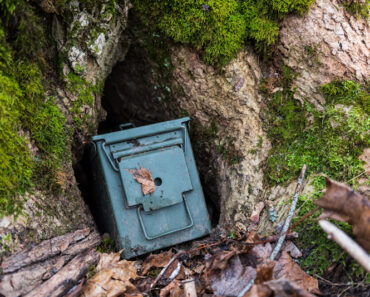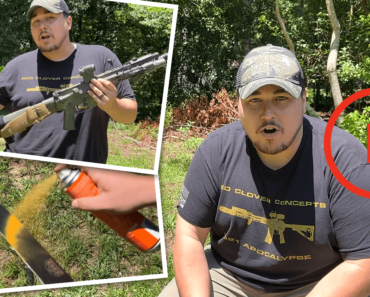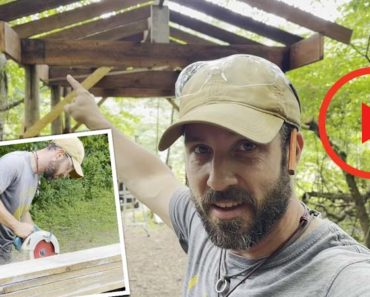Embarking on the quest for turkey hunting presents an invigorating challenge, demanding a blend of expertise, perseverance, and a profound insight into the avian creatures’ conduct and surroundings.
Whether you find yourself amidst seasoned hunters or stepping into the realm as a novice, quite a few strategies and advice awaits to elevate your success in the great outdoors. Within the lines of this article, we will dig into the fundamentals of turkey hunting.
Turkey Hunting in the Good Ol’ USA
Turkey hunting in the USA had a rough start, with the birds becoming nearly extinct, surviving in remote areas. Thanks to hard work, wild turkeys are now abundant throughout the country.
The decline of turkey numbers began in the late 1800s to the 1930s. Habitat loss and excessive hunting, as people moved west, clearing land for farms and homes, disrupted turkey habitats. Hunters played a part by killing many turkeys for food, fun, and feathers.
After World War II, the number of wild turkeys got so low that they entered the endangered species list. But, after that, states, groups helping nature, and people who liked hunting got together to save the turkeys. They did things like fixing their homes, breeding more turkeys in captivity, letting them go, and making strict rules for hunting.
In the 1950s, a big group called the National Wild Turkey Federation (NWTF) started. They talked about how turkeys needed help and pushed for saving and bringing them back. The NWTF also paid for studies on how turkeys live and act, which helped make new plans for taking care of them.
Now, there are about 7 million wild turkeys in the U.S., with five subspecies, each with its own habitat and behaviors. The Eastern one is the most common, living in the east part of the country. There are also Florida, Merriam, Rio Grande, Gould’s, and Ocellated turkeys, each in their own regions.
Even though we saved them, lots of folks still like to hunt wild turkeys. It’s fun and tricky because turkeys are smart and careful creatures. Some people argue about using fancy gear for turkey hunting. Some say high-tech stuff is cool, like special sights and shotguns. Others say it’s not needed and takes away from the fun of hunting in the wild.
Using the Right Shotgun for Turkey Hunting
Finding the right shotgun for turkey hunting is a big deal in the world of chasing gobblers. Some folks might tell you that you need a brand-new shotgun, but your trusty old 12-gauge might do the trick just fine. Yeah, the new ones have their perks, but before you open your wallet, let’s break down what really matters.
Turkeys are no pushovers; they’re tough and can take a beating. It often needs a bunch of pellets and a few shots to bring one down. The secret to success is aiming for the turkey’s small and tricky head and neck. Your shotgun needs to scatter as many pellets as possible in these spots to make sure you get a clean and humane kill.
Sure, some hunters go for shotguns that aren’t 12-gauges, but most folks agree that a 12-gauge is top-notch for turkey hunting. And it should have a full choke. If it’s got a 3-inch chamber instead of a 2-3/4-inch one, it gives you a bit of an edge, letting you pack more punch in the turkey’s head and neck.
Shooting a shotgun isn’t a perfect science; the wide shot pattern can lead to some slip-ups. But if you can keep the turkey’s head and neck in your shotgun sights at a decent distance, you’re in good shape. You don’t really need fancy stuff like scopes to hit the jackpot; those might just be tricks to make you spend more cash.
In the turkey hunting game, the most important thing is to pick a shotgun that feels right for you and can make a killer shot. Get the right gear, add a dash of skill, and you’re on your way to bringing home a tasty wild turkey for your next family feast.
Using the Right Ammunition for Turkey Hunting
When you’re out turkey hunting, the ammo you pick can be the game-changer. Everyone’s got their own likes, but my advice is to go big on the shot charge rather than speed. I’d go for a 2-3/4-inch 12-gauge with 1-3/8 or perhaps 1-1/2 ounces of lead shot.
The size of the shot is another thing to think about. Some hunters like more small shots for a bigger impact, while others go for the heavy hitters for deep hits. Shot sizes can go from #7s to #4s, but I’m leaning toward the middle ground with #5s for most hunts.
No matter the shot size, it’s a must to check how your shotgun spreads at around 30 yards. This helps you see how many shots hit compared to the size of a turkey’s head and neck. That way, you’re sure to get a clean and humane kill. Turkeys need a bunch of pellets and hits to go down. Choosing the right ammo boosts your chances and makes your turkey hunting a whole lot more fun.
Decoding Decoys: Do You Need Them or Not?
Deciding whether to use decoys in your turkey hunting game is a smart move, and here’s why. First off, the sight of those decoys can lure in the birds, making them curious and more likely to come closer, increasing your chances of a successful shot.
Not only that, but decoys can be a handy distraction for the turkeys. Instead of keeping their eyes on you, they get hooked on the decoys. Turkeys have sharp eyes, so having something to catch their attention lets you move and get ready for your shot without them noticing.
You don’t have to break the bank on fancy decoys; even one or two can do the trick. There’s a bunch of options out there, from simple silhouettes to blow-up or full-bodied decoys. Personally, I lean towards the lightweight blow-up ones – easy to carry and set up.
When you’re placing your decoys, make sure it’s within your shotgun range and have a clear view for the turkeys to spot them quickly. Spacing them around 30 yards apart is a good idea; it acts like a guide when a bird shows up.
Keep in mind, though, that while decoys can up your turkey hunting game, they’re just one piece of the puzzle. Knowing turkey behavior and hunting tricks is just as important for a successful turkey hunt.
Turkey Talk or Turkey Calls
When it comes to making noise in the bird hunting scene, calling ducks and geese might seem like a tough gig, but turkey calling is often seen as a bit easier to pick up. Yet, for new turkey hunters, the first thing that hits them is the smorgasbord of turkey call options. You’ve got the basic crew: the slate or friction call, the box call, the push-pull, and the mouth or diaphragm call, each flaunting its own gang of unique subtypes.
Apart from the regular turkey calls, throwing in a locator call can be a game-changer. Unlike other calls that mimic turkey sounds, locator calls throw out weird noises that grab turkeys’ attention. A crow or hawk call is a go-to for locators, but any loud sound might make turkeys gobble, letting the hunter know they’re around. Here’s a funny twist: once, an anti-hunter in a car honked the horn to mess with the game, but it ended up pointing the hunters to the turkey calls.
Each turkey call has its time to shine, but the mouth or diaphragm call can be a bit tricky to get the hang of because it feels awkward in the mouth. But it’s hands-free, requires less movement, and is weather-resistant. On the flip side, the push-pull and box calls are the easy, breezy ones, making noise with a simple scratch. Just keep them dry because wood and friction don’t mix well with wet conditions.
Then, there’s the slate call, a bit more challenging to master but a crowd-pleaser with its pot and striker duo. It can churn out a variety of turkey sounds, from soft clucks to loud yelps. Play around with the striker’s angle, movement, and pressure, and you’ve got a symphony of turkey talk. Each call has its perks and downsides, so hunters should pick the one that fits their style and needs.
Camo Tactics and Gear for Turkey Hunting
When it comes to hunting turkeys, their eagle-eyed vision demands a stealthy approach, minimizing any giveaway movements. For most turkey hunters, going all-in on camo, even rocking a face net, isn’t just an option – it’s a must. While some folks swear by face paint, I’m more into the netting game. It’s easy to stash away or roll up when you don’t need it. Whatever your fancy, camo is the name of the game to avoid sticking out like a sore thumb.
Toting a compact portable blind can come in handy, but the real magic happens when you blend into nature with the right camo. And don’t forget a little barrier against the elements. A comfy cushion is a go-to for many hunters, and some even clip it to their belts for quick access. I’m not big on using one, but they seem cozy, especially if you’re leaning against a tree for support. Personally, I throw a black garbage bag into my backpack or fanny-style pack – versatile and handy for various needs.
Concluding
Turkey hunting isn’t just an outdoor activity; it’s a thrilling challenge that demands a blend of skill, patience, and the right gear. Whether you’re fine-tuning your turkey calls, perfecting your camouflage game, or ensuring comfort during those long field hours, there’s a lot to factor in when you’re after these elusive birds.




























